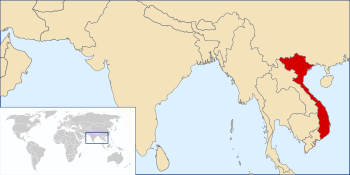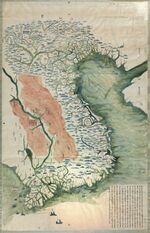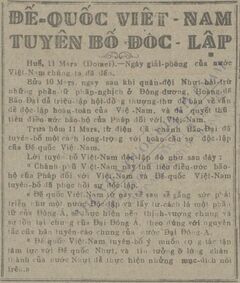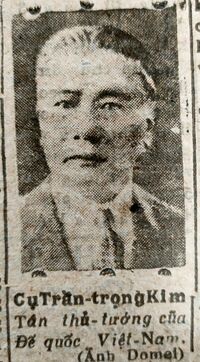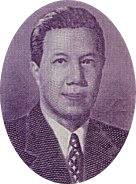امبراطورية ڤيتنام
| ||||||||||||||||||||||||||||||||||||||||||||||||||||||||||||||||||||||
| ||||||||||||||||||||||||||||||||||||||||||||||||||||||||||||||||||||||
امبراطورية ڤيتنام (ڤيتنامية: Đế quốc Việt Nam; Hán tự: 越南帝国; يابانية: ベトナム帝国)، كانت دولة قصيرة العمر تابعة لامبراطورية اليابان[1] تحكم عموم ڤيتنام بين 11 مارس و25 أغسطس 1945. At the end of its rule, the empire also successfully reclaimed Cochinchina as part of Vietnam.[2]
التاريخ
During World War II, after the fall of France and establishment of Vichy France, the French had lost practical control in French Indochina to the Japanese, but Japan stayed in the background while giving the Vichy French administrators nominal control. This changed on 9 March 1945 when Japan officially took over. To gain the support of the Vietnamese people, Imperial Japan declared that it would return sovereignty to Vietnam. On 11 March 1945, Bảo Đại was permitted to announce the Vietnamese "independence", this declaration had been prepared by Yokoyama Seiko, Minister for Economic Affairs of the Japanese diplomatic mission in Indochina and later advisor to Bảo Đại[3]
Emperor Bảo Đại declared the Treaty of Huế made with France in 1884 void. Trần Trọng Kim, a renowned historian and scholar, was chosen to lead the government as prime minister.[4]
السياسات
قضايا دستورية
الاصلاح التعليمي
الاصلاح القضائي
تشجيع المشاركة السياسية الجماهيرية
توحيد الأراضي
التراجع
استيلاء ڤيت منه
انظر أيضاً
- أنام (محمية فرنسية)
- تونكين
- Cochinchina
- اعلان استقلال جمهورية ڤيتنام الديمقراطية
- ڤيتنام أثناء الحرب العالمية الثانية
- غزو الهند الصينية الفرنسية
الهوامش
المصادر
- Vu Ngu Chieu (February 1986). "The Other Side of the 1945 Vietnamese Revolution: The Empire of Viet-Nam". Journal of Asian Studies. 45 (2).
| سبقه أسرة وين |
أسرة ڤيتنام | تبعه جمهورية ڤيتنام الديمقراطية الشمالية جمهورية صين كوتشين |
- Short description is different from Wikidata
- Articles containing ڤيتنامية-language text
- Articles containing صينية-language text
- Pages using infobox country or infobox former country with the flag caption or type parameters
- Portal-inline template with redlinked portals
- Pages with empty portal template
- Pages using Lang-xx templates
- دول ومناطق تأسست في 1945
- دول تابعة لامبراطورية اليابان
- مسرح جنوب شرق آسيا في الحرب العالمية الثانية
- التاريخ العسكري لڤيتنام أثناء الحرب العالمية الثانية
- أراضي محتلة أثناء الحرب العالمية الثانية
- بلدان سابقة في تاريخ ڤيتنام
- حركة الاستقلال الڤيتنامية



